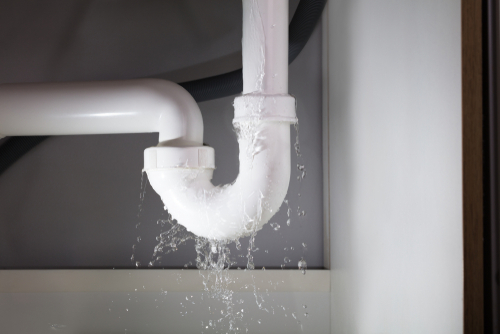A well-maintained plumbing system ensures that safe, clean water flows into your home, and that wastewater flows safely out. Plumbing systems are complex, with many components. From showers and tubs to sinks and toilets, your home’s complex network of pipes is critical to the comfort of your home, and can cause major water damage if any part of it fails.
When you have plumbing-based water damage to your home, who can you call for help? A plumber is often your first choice. A plumber can definitely stop a water leak, but they rarely can handle the damage that leaks can leave behind. Getting your home back to normal may require help from multiple teams. In this article, we will share an overview of the water damage clean-up process, and explain the roles and responsibilities of the professionals involved in each step.
A plumbing leak that causes water damage to your home is not something that you can ignore, but thankfully help is easily available. Here’s a big-picture breakdown of what the process of water damage clean-up and restoration usually involves:
There is one final factor that influences all seven of the steps above: Time. With any type of water damage, quick action is essential. When you stop the leak and start water damage restoration as soon as possible, the scope of repair needs will be limited, and bigger issues like mold growth can be stopped before they start. Now that you understand the overall process, let’s discuss the professionals involved in more detail.
Plumbers understand all of the water supply and drainage systems in your home. They can fix issues like a leaking pipe, appliance, or fixture. If you can see water leaking from a pipe or water coming from appliances like your water heater, washer, or dishwasher, a plumber can help.
Even if you can’t see the source of a leak, plumbers can detect problems using infrared cameras, since wet areas are cooler in temperature. Plumbers will stop the water coming into your home, and then repair the problem that was causing the leak. They should always make sure that the problem is completely repaired or replaced before turning the water back on in order to prevent even more water damage.
Once the water was stopped, and the problem was located and repaired, the plumber’s work is typically done. If you had a major leak, or even a small one that went unnoticed, you may be faced with significant water damage that you can’t clean up yourself.
If you are in this situation, the next professional who can help is a water damage restoration contractor. At Green Clean, our expert teams work quickly to remove the water, and can detect hidden moisture in areas like your drywall, carpet, and walls. We know how to dry and disinfect your home using our advanced measurement tools, and high-powered equipment like pumps, extractors, air movers, and dehumidifiers. We have large teams that can be on-site 24/7, ensuring an effective, timely response that will protect your home and family.
Water damage can quickly get worse if you don’t get the right help. Issues like mold and hidden structural damage can cause big problems. A restoration contractor knows how to find and prevent these dangerous situations, and can be your partner through the homeowners insurance claims process.
If you are surprised with water damage in your home, it’s common to feel confused and overwhelmed. For Minneapolis homeowners, there is trusted, local help available. Green Clean is a licensed general contractor certified by the Institute of Inspection, Cleaning and Restoration Certification (IICRC). We are always ready to step in and to help you with water damage restoration and cleaning services in the Twin Cities area.
Green Clean’s skilled restoration team is filled with experts who know how to successfully tackle water damage of any type or size. After the plumber has left, we are ready to guide you through the next steps. Don’t face a confusing, wet mess alone – contact Green Clean for help today.

Notifications